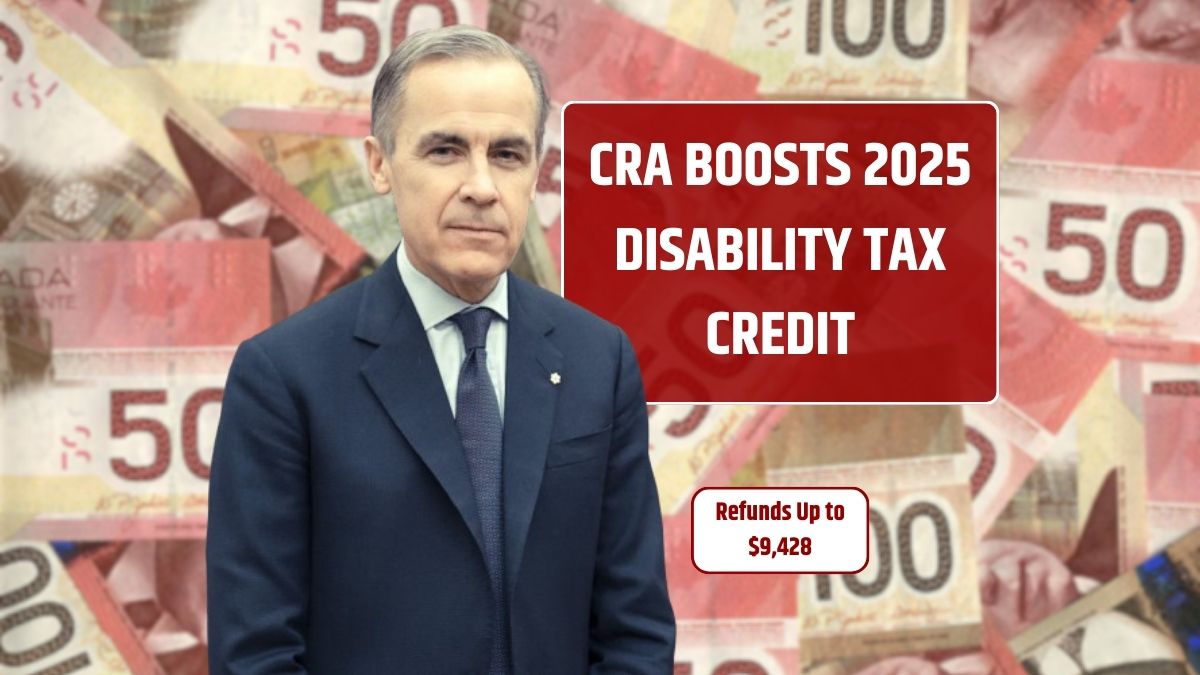As the cost of living continues to climb, many Canadians are looking for financial breathing room. That’s where the 2025 update to the Disability Tax Credit (DTC) comes in. The Canada Revenue Agency (CRA) has officially confirmed higher refund amounts—up to $9,428 for eligible individuals. And if you’re under 18 or have a dependent, you might see even more back in your pocket.
This isn’t just another tax change—it’s a lifeline for Canadians living with long-term disabilities. If that’s you or someone in your family, this article breaks down everything you need to know and how to take full advantage of the program.
Purpose
The DTC is a non-refundable tax credit meant to lighten the tax load for people with significant physical or mental impairments. By reducing your taxable income, it ensures more money stays in your wallet—money that can go toward essential expenses like medication, therapy, or daily care.
So, what’s new in 2025? For starters, the federal amount is higher than ever. This is part of a broader push by the government to make life more affordable and inclusive for all Canadians, especially those facing long-term health challenges.
Criteria
To get approved for the 2025 Disability Tax Credit, you’ll need to meet several CRA-defined conditions:
- Long-term impairment: The disability must last—or be expected to last—at least 12 months.
- Daily life impact: Your condition must seriously limit your ability to do everyday activities like speaking, walking, dressing, or thinking clearly.
- Doctor’s form: A licensed medical professional has to fill out the T2201 form to confirm your eligibility.
- Qualifying conditions: Common ones include autism, diabetes, epilepsy, MS, severe anxiety, and more.
Once approved, your DTC can be applied retroactively for up to 10 years. That means you might be owed thousands in past refunds—even if you just applied this year.
Refunds
Here’s a quick snapshot of the 2025 refund breakdown:
| Category | Amount (CAD) |
|---|---|
| Base Federal DTC | Up to $9,428 |
| Supplement (Under 18) | Additional $5,500 |
| Provincial/Territorial Credit | Varies by region |
If you’re a caregiver or have eligible dependents, your refund could climb even higher depending on your province or territory.
Benefits
Getting approved for the DTC does more than reduce your tax bill. It opens the door to a whole range of additional supports. Here are a few:
- Registered Disability Savings Plan (RDSP): Helps you save for long-term needs.
- Child Disability Benefit: Monthly support for families with disabled children.
- Canada Workers Benefit Disability Supplement: Adds to your income if you’re working.
- Medical Expense Deductions: More deductions for related healthcare costs.
Think of the DTC as a key. Once you’re in the system, you unlock a bunch of other doors—each one leading to more support and savings.
Process
Ready to apply? Here’s your step-by-step checklist:
- Download the T2201 Disability Tax Credit Certificate from the CRA website.
- Ask your doctor or medical practitioner to complete the medical portion.
- Submit the form either online via your CRA account or by mail.
- Keep all documents and medical records handy in case CRA needs more info.
- Talk to a tax expert if you think you’re eligible for past years. Retroactive claims could mean thousands in refunds.
And don’t be discouraged if you were denied before. The rules and awareness around disabilities have improved in recent years. Reapplying in 2025 could bring a different result.
The 2025 DTC update isn’t just a nice-to-have—it’s a financial game-changer for many Canadians. Whether you’re living with a disability or caring for someone who is, this credit can provide the kind of support that makes daily life just a bit easier. From big tax refunds to doors opened for other benefits, the value adds up fast. So don’t wait. Get the paperwork started and see what kind of difference the DTC can make for you.
FAQs
Who qualifies for the 2025 DTC?
Anyone with a severe and long-term disability affecting daily life.
How much can I get from the DTC in 2025?
Up to $9,428 federally, plus more for minors or dependents.
Can I claim past years with DTC?
Yes, you can claim retroactively for up to 10 years.
What form do I need to apply?
You need the T2201 form certified by a medical professional.
What if I was denied before?
You can reapply in 2025 under updated guidelines.






















